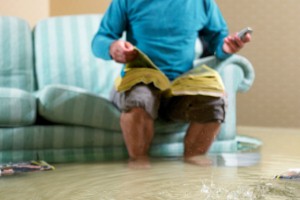Electrical safety advice for flood-hit homes
Keeping liquids away from switches and sockets in the home is one of the first things safety-conscious parents teach their roaming toddlers.
Now the Electrical Safety Council (ESC) has put together guidance for householders who may be affected or even put at risk by this week's flash floods.
With heavy rainfall predicted across several areas of the UK this week and next, more homeowners could find they have to move out temporarily to cope with rising water in their property.
Penny Walshe of the ESC pointed out that water and electricity are "a lethal combination", so householders must be careful when it comes to sorting out their flood-stricken homes.
"It may not immediately spring to mind when you are faced with the catastrophe of a flood in your home, but make sure that electrical safety is a priority before you try to do any clearing up."
The ESC advised individuals not to touch any sources of electricity, including power sockets, light switches and appliances when they are standing in flood water. The priority is to turn off the electricity supply, so if homeowners are not sure what to do, they should get in touch with their utility provider.
If electrical repairs or connection of temporary supplies are required, a qualified electrician should be sought rather than have a layperson attempt to fix a flooded home's electrics, the ESC said, adding that after the house has dried out it should be subject to an Electrical Installation Condition Report to see if the electrical wiring is still safe.
Meanwhile, the Health and Safety Executive (HSE) has successfully brought a prosecution against a contracting company and its managing director after a worker received an electric shock and serious burns during routine maintenance work.
HSE inspector Jack Wilby commented after the court case: "[The managing director] is a qualified electrician who really should have known better. He and his firm ignored the essentials, in this instance isolating the power and ensuring a ladder was used in a safe manner. As a result [the worker] was placed in totally unnecessary danger and he very nearly paid with his life."

